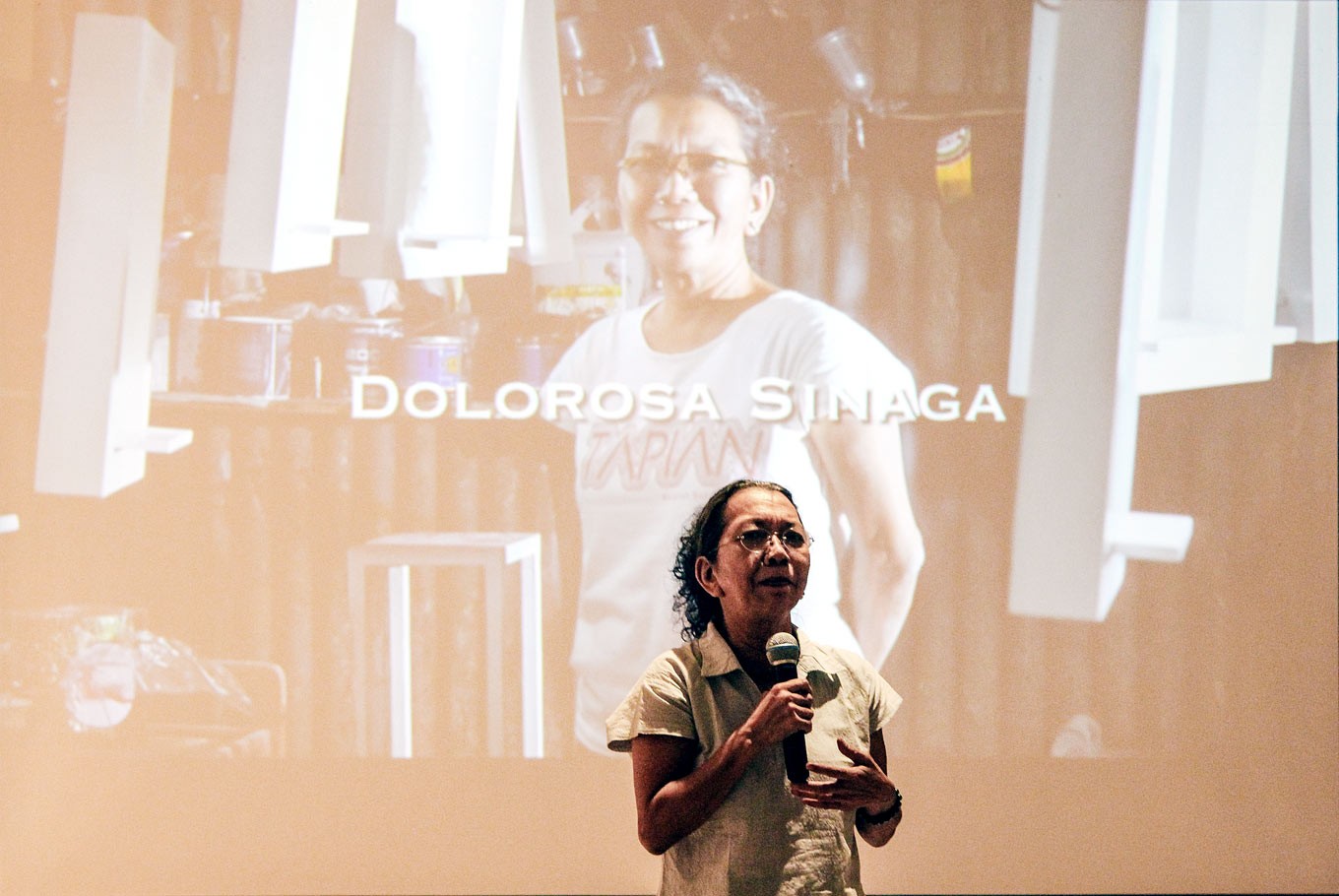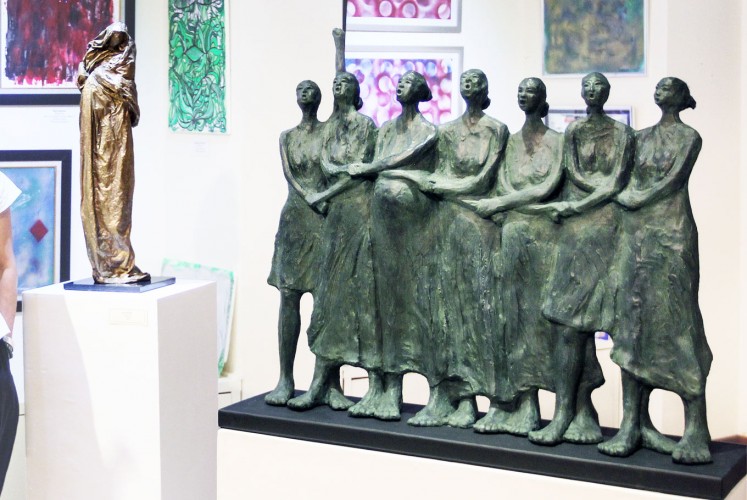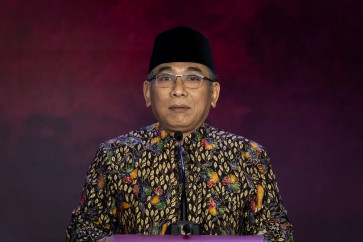Popular Reads
Top Results
Can't find what you're looking for?
View all search resultsPopular Reads
Top Results
Can't find what you're looking for?
View all search resultsDolorosa Sinaga: A sculptor with heart and soul
As a legendary sculptor, Dolorosa Sinaga thrives on bearing herself to the world’s eyes to give attention to overlooked social problems.
Change text size
Gift Premium Articles
to Anyone
A
s a legendary sculptor, Dolorosa Sinaga thrives on bearing herself to the world’s eyes to give attention to overlooked social problems.
Her thematic works, and their depth, stem from a deep concern for the welfare of all people, however she insists that all her pieces are reactionary toward a certain issue or event.
“All sculptures that I have created bear my soul. I have no specific agenda in my creative process, mainly my reaction toward something and the background behind that. The process is simple. When I fail, I simply try again,” the maestro said at a recent talk and showcase at the Italian Institute of Culture in Jakarta.
A particular work of hers that has become part of the Jakarta cityscape is the Semangat Angkatan 66 (The Spirit of Batch 66) piece, which sits at the far edge of Jl. H. Rasuna Said in Kuningan, South Jakarta.
Her works have also been showcased around the world, many of which were commissioned directly by international artists in places such as Italy, Malaysia, Vietnam and the United States.
Many of her pieces have strong socio-political themes, mainly revolving around the welfare of Indonesian women. In a patriarchal society such as Indonesia, the rights of women tend to be brushed aside or not taken as seriously by the public, who are raised with the idea that a woman must always be submissive to a man’s whims. The male whims may manifest as something personal such as issues in one’s home, or even social issues involving the male-dominated government’s way of thinking.
A particular piece Dolorosa is proud of is a bronze sculpture entitled Solidaritas. Unveiled in 2000, it depicts a line of seven abstractly molded women standing and shaking each others’ hands to reinforce the idea of a strengthened fence. It is probably her most personal work due to the piece being inspired by the Jakarta riots of 1998, which treaded heavily on women’s rights and the rights of citizens, mainly the ethnic Chinese.
In this period, she saw that many people had turned into abusive vigilantes overnight, striking a fear that violence could happen anytime and anywhere.
“[This piece] is the result of all the helplessness I felt because I couldn’t do anything to prevent the atrocities from happening, it affected my work. So the first thing I did when I had the chance to do a solo exhibition back in 2000, I wanted to show a work that showed the solidarity and strength of women,” she said.
On account of her dedication and sympathy to this message, she deliberately made multiple copies of the sculpture. One copy of Solidaritas currently sits in the International Monetary Fund (IMF) headquarters in Washington DC, and another one fittingly sits at the National Commission on Violence Against Women (Komnas Perempuan).
Solidaritas (Solidarity) (JP/Ibrahim Irsyad)
Some of her works were made deliberately to represent multiple situations and issues simultaneously. Her 2003 bronze piece We Will Fight is able to touch on the issue of forced evictions as well as heavier topics such as the 1998 Trisakti killings.
Methodically, she is also very open-minded to diversifying her craft. Dolorossa is also a local pioneer in using fiberglass material to sculpt her works. Her decision to move into fiberglass material, away from her usual materials of bronze and copper, is due to the importance of an artist to recognize the development of technology for the sake of art and experimenting with untried methods.
While her works very explicitly display feminist tones and female independence, the maestro notes that sculpting is not necessarily the most suitable medium to express certain issues. An example of this is her admittance that her works are not able to express in detail social problems affecting women such as harassment and abuse. She acknowledged that paintings would be a more suitable form of expression to show more detail and depth.
“When you have an idea to interpret an issue through art, you must not force any medium on it because not all forms of art can depict that issue perfectly. I can say that it is difficult for me to truly and perfectly depict female harassment in my sculptures. Trust me, paintings are more suitable for such issues because they are able to express them better,” she explained.
The maestro feels it is a waste to have profound thoughts on a certain issue and not share them with the world. It is an ethos that she also teaches to her students at the Indonesian Institute of Art (IKJ), where she has been teaching since 1983.
“If you have knowledge to share, then you must make like a river and share it with others. By keeping the knowledge to yourself, you will be left without a legacy”.












